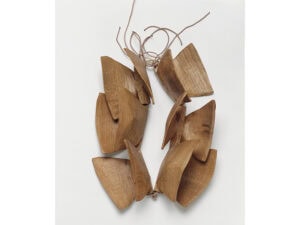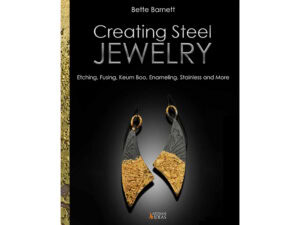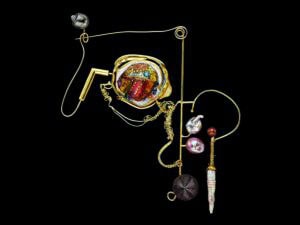I have a habit of making calendars, almost obsessively – in my sketchbook, by the computer and pinned up in my studio. So I know that it’s only been a month since I returned from Seattle and the SNAG conference, but it feels like a full season has passed. Somehow I’m still scrambling to avoid scorching everything I put on the backburner in May. Now I’ve had some time to sit with the whole ordeal, read other blogs, and let things settle . . .
Often the difference between one conference and another has more to do with the individual attendee than the programming. I’ve been on a hot spree of SNAG conferences for the past six years and in some ways they become interchangeable. The routine of lectures and exhibitions coupled with the landscape of a giant hotel and an unknown urban setting blurs into a merry-go-round of manic conversations and gut reactions. The whole conference experience is so removed from daily life that it can be too much to process.
As a student, the disconnect was not as noticeable because of the zeal and brittle optimism that keeps students always, everywhere, attending conferences. Now that I’ve been an ’emerging artist’ for three years, I find the experience to be a lesson in selective gluttony. Suddenly there is too much to see, jewelry everywhere and far too many conversations to have, all in less than a week. The few moments where that energy slowed and I felt the luxury of considered observation and connection are still important, even more so given how difficult they can be to achieve under such chaotic conditions. This is still my main motivator for attending the conference. I can email, facebook and skype to my heart’s content but real, organic conversation about our conflicts and commonalities is still worth it. I’ll stop going when it isn’t. Between casual exchanges over coffee with new acquaintances and in arranged meetings, I squawked myself hoarse. After a week-long coma, I woke up with a bee in my bonnet.
In reflecting on the conference as a whole, I find myself frustrated by how limited the dialogue can be. While the culture at large is eagerly embracing materiality and process-oriented work has spilled back again into every medium out there, we’re still chasing our collective tails, backbiting, infighting, aggrandizing and self-pitying. And some people have, inevitably, opted out.
Ask why someone isn’t attending the SNAG conference and there’s usually a very short list of responses.
1) ‘What’s a SNAG?’
This will lead me to a complicated digression about acronyms, misnomers and a feeling that I’ve got more in common with children opining about summer camp to the uninitiated than I’m comfortable with.
2) ‘I’m too broke.’
Aren’t we all. As members of the small subsection of art jewelry within the marginal field of studio craft under the larger umbrella of the ‘fine art’ world in the middle of a recession, I find myself wondering why I think it’s a good idea to go anywhere or do anything other than panhandling and sock-darning. This answer is always met with peer pressure – not out of support, but to avoid confronting my own lack of solvency and the curious resolve that sends me to yet another conference I cannot afford. If I’m going to subject myself to this, you will too!
3) ‘I quit going—it’s just too cliquey.’
I no longer have a strong case against this one. While straddling my past as an ardent student of metalsmithing with my present as a maker of art jewelry, I have often been too generous in thinking of myself as some sort of diplomat for these two camps. I’ve undertaken this for very selfish reasons – to assuage my own guilt. Traditional metalsmithing/bench jewelry was my first love and I’ll always have a soft spot for those who continue to love it and work in that way. However, I am now much more interested in the experimental edges of what art jewelry is capable of while at odds with the self-seriousness that too often accompanies it. As a result, I am often defending one group to another or caught in the crossfire of conversations whenever I find myself in mixed company. During one day at the conference I found myself, in turn, frustrated by a dewy-eyed undergrad who was castigating a fellow student for not making her own wedding rings and then biting my tongue every time someone dropped some hot art speak out of context and without provocation. For the record, the word ‘trope’ triggers my gag reflex.
So I’ve come to a personal conclusion. I am so unbearably tired of this cyclical talk about ‘craft versus fine art.’ As if the two could be so easily teased apart. As if the two were forever at odds. As if our very lives depended upon the resolution. More specifically, it’s as if our credibility as makers of art jewelry, as well as our field collectively, has something to prove. The result is an oversimplified and reductive perspective. Which is why I was surprised at how many people responded negatively to the panel discussion ‘Nothing If Not Critical.’ There is a difference between criticality and elitism. Our lack of a true critical tradition has led to a culture of elitism. Whether it’s to do with material hierarchy, process nerd-ery or anti-aestheticism, many of us have lost our ability to interact without a pecking order. In the end, the panel discussion barely scratched the surface, so I’m glad that the panel members have continued adding their writing to the AJF blog. After all, it’s hard to be subversive without having someone out there drafting paradigms.
I am sick to death of the dearth of actual criticism within our field as well as our reluctance to acknowledge that this is a problem. In our eagerness to be taken seriously we’ve bent over backward appropriating what we think will solve the problem – installation, performance and conceptualism – because they came up in a critique, or because someone finally picked up a copy of Artforum. I will concede that a very small number of people have bridged the gap well. Iris Eichenberg combines jewelry with installation gracefully and Robert Longyear gets better each time around (as does his use of text). And though flawed, the Exhibition in Motion: Objects Performed made a case for the true performative nature of art jewelry this year. The rawness that led to many logistic glitches also created an environment for some very lyrical interactions.
But off the top of my head, truly conceptual jewelry that is not making a major concession does not come to me easily. People continue to be mistakenly referential at best. That doesn’t mean it shouldn’t be attempted, but it can only succeed if there is sincere intent and with a keen eye on unique and individual intention. At our best, art jewelry is capable of powerful, totemic expression and has an intimacy that no other medium is capable of. It’s the fear of sincerity and the vulnerability that can accompany it that have become problems. Because, rather than embracing what jewelry does best, what is inherent to all craft media, there is an undercurrent of cynicism that misappropriates the language and tools of ‘fine art’ as if that could heal our insecurities. Rather than huffing and puffing about a perceived debate that no one outside of studio craft appears to be taking seriously, we should be talking about what art jewelry can do.
It has been repeatedly made obvious that ‘mainstream’ artists are interested in hand work, craft materials and process as content. The SNAG conference keynote speaker, Glenn Adamson, made that resoundingly clear for anyone who hasn’t been paying attention for the last decade. That might be the only thing that he made clear, but his limited scope bolsters my point. Why aren’t we flattered by this phenomenon rather than insulted?
This is why, upon returning home, the new issue of Metalsmith only served to rattle that bee that has been buzzing around in my bonnet. In his article ‘Graphic Content,’ Gabriel Craig has set out to do a noble thing in advancing the work of several emerging art-jewelry makers. And he makes a strong case for the work featured. But by setting up each emerging maker with an established ‘fine artist,’ he does a disservice to both parties and oversimplifies the work in both cases. In particular, the comparison of Arthur Hash’s use of imagery to Kara Walker’s felt like some sort of art school Madlib gone very wrong. This line of thought continues to serve the shortsighted, simplistic approach at attempted critical discourse that has left us in this disagreeable state. I don’t want to be the next anyone, nor do I want art jewelry to be the next anything. I just want us to be inclusive, rather than exclusive. As the ‘Nothing If Not Critical’ panel set out to do at SNAG, let’s establish our own criteria rather than borrow someone else’s.
I used to envy makers and artists with the support of a large community behind them. Seattle is not lacking in this regard and the quoted number of 1000 attendees this year, speaks for itself. But simply put, if every week brought with it the clucking and fretting that is SNAG, I would tear my hair out in frustration. The obsessive way that so many makers talk about their work and the inequities of the art world with regard to jewelry seems completely lacking in perspective. Of course I go for the indulgence, to be overwhelmed and surrounded by something akin to a peer group, but in the end I’m always eager to get back on a plane and fly home to my bat cave. Maybe in making peace with my place in the field as a non-precious maker I now feel comfortable picking at the edges more than before. ‘After all, it’s just jewelry.’ That is my take away this year, my favorite exasperated utterance of the whole week. Amen.




